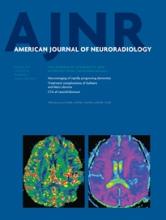Abstract
BACKGROUND AND PURPOSE: Multiple patient-specific clinical and radiologic parameters impact traditional perfusion thresholds used to classify/determine tissue outcome. We sought to determine whether modified baseline perfusion thresholds calculated by integrating baseline perfusion and clinical factors better predict tissue fate and clinical outcome.
MATERIALS AND METHODS: CTP within 4.5 hours of acute anterior circulation stroke onset and 5- to 7-day MR imaging were performed for 203 patients with stroke, divided into derivation (n = 114) and validation (n = 89) data bases. Affected regions were operationally classified as infarct and noninfarct according to baseline CTP and follow-up FLAIR imaging. Perfusion thresholds were derived for each of the infarct and noninfarct regions, without and with transformation by baseline clinical and radiologic variables by using a general linear mixed model. Performance of transformed and nontransformed perfusion thresholds for tissue fate and 90-day clinical outcome prediction was then tested in the derivation data base. Reproducibility of models was verified by using bootstrapping and validated in an independent cohort.
RESULTS: Perfusion threshold transformation by clinical and radiologic baseline parameters significantly improved tissue fate prediction for both gray matter and white matter (P < .001). Transformed thresholds improved the 90-day outcome prediction for CBF and time-to-maximum (P < .001). Transformed relative CBF and absolute time-to-maximum values demonstrated maximal GM and WM accuracies in the derivation and validation cohorts (relative CBF GM: 91%, 86%; WM: 86%, 83%; absolute time-to-maximum 88%, 79%, and 80%, 76% respectively).
CONCLUSIONS: Transformation of baseline perfusion parameters by patient-specific clinical and radiologic parameters significantly improves the accuracy of tissue fate and clinical outcome prediction.
ABBREVIATION:
- Tmax
- time-to-maximum
- © 2014 by American Journal of Neuroradiology












